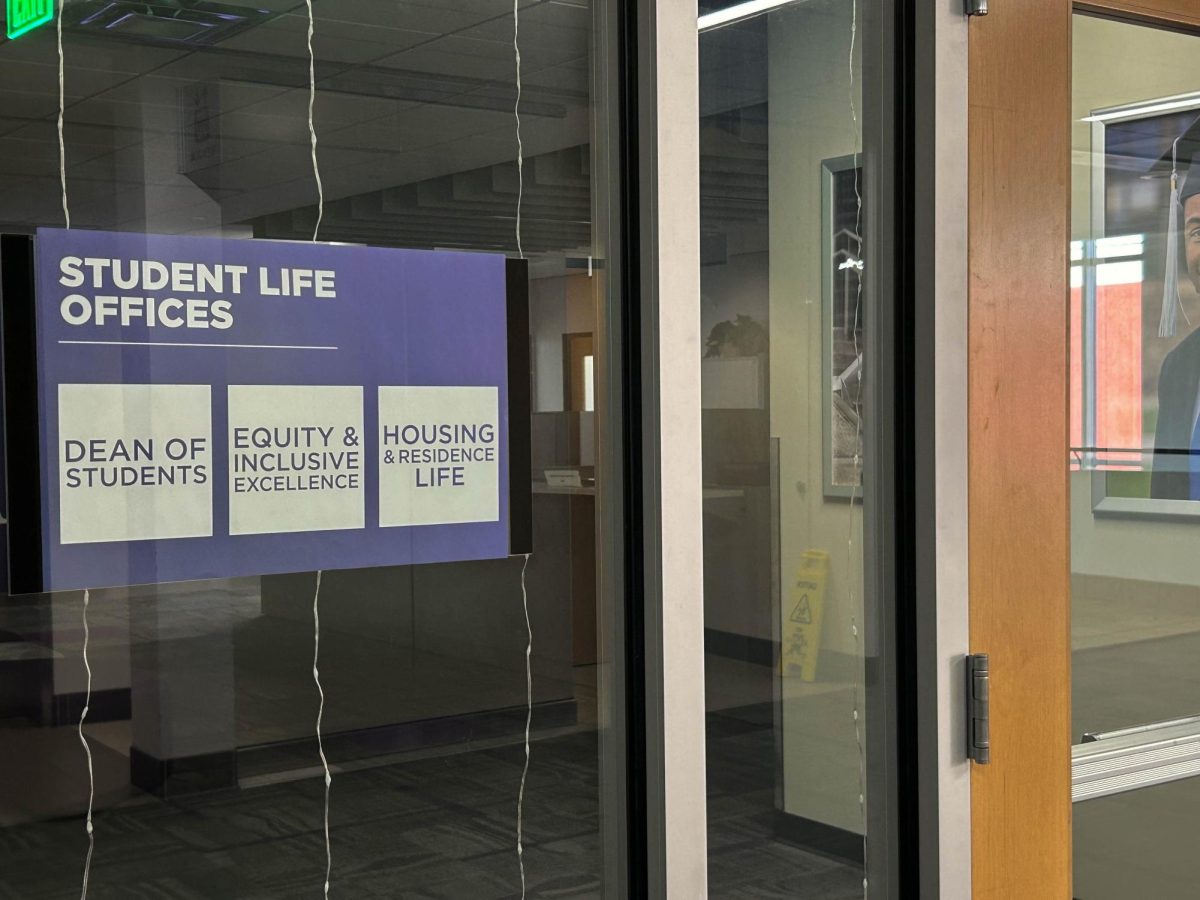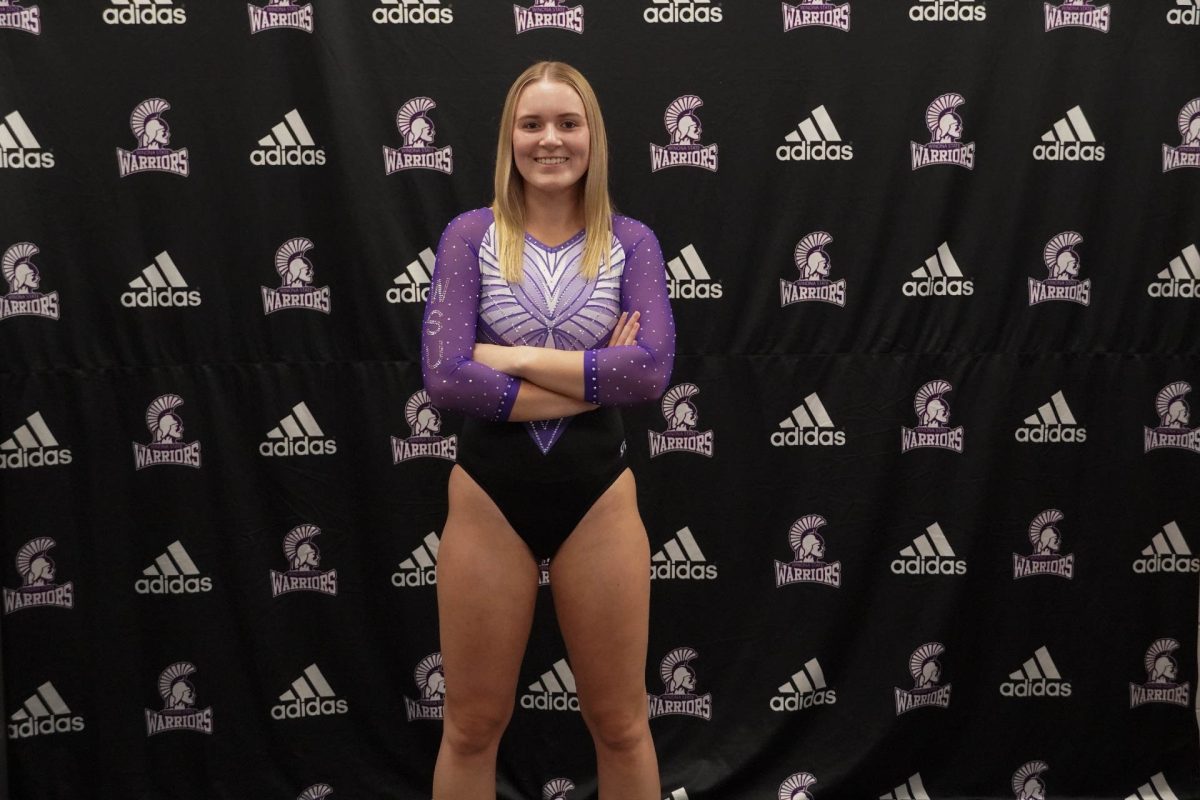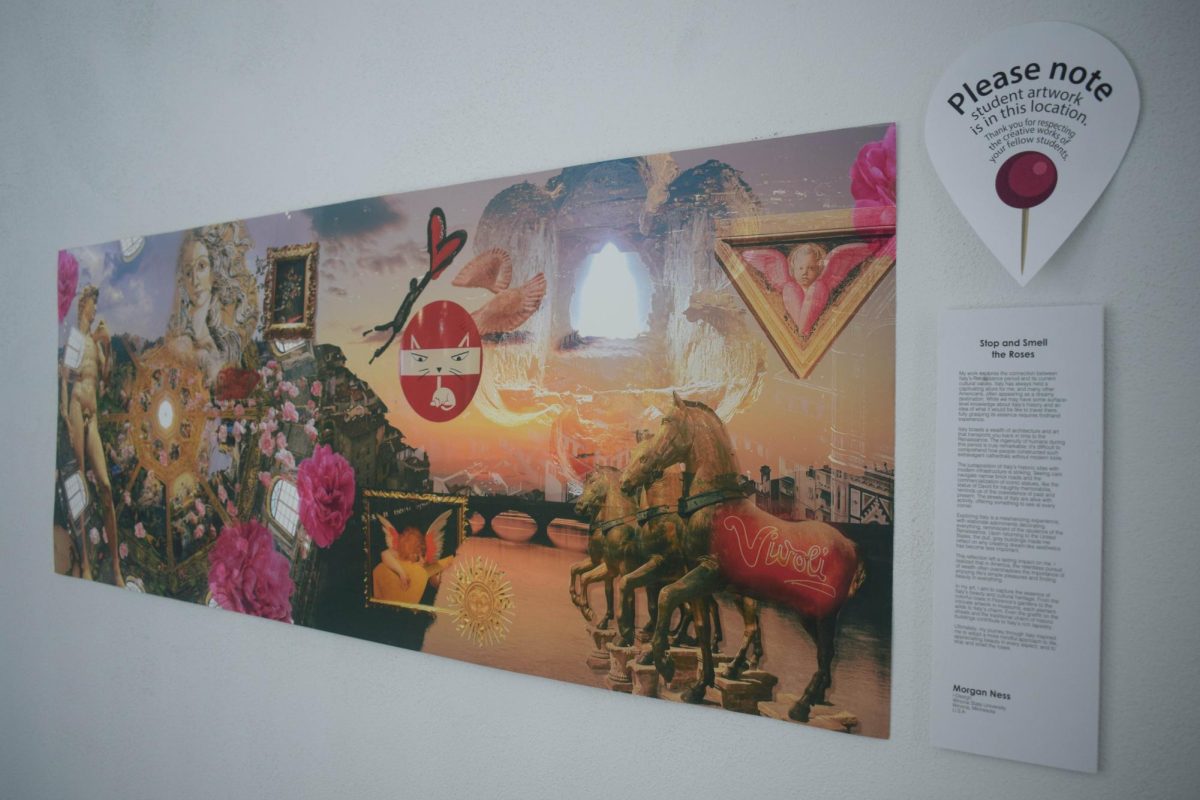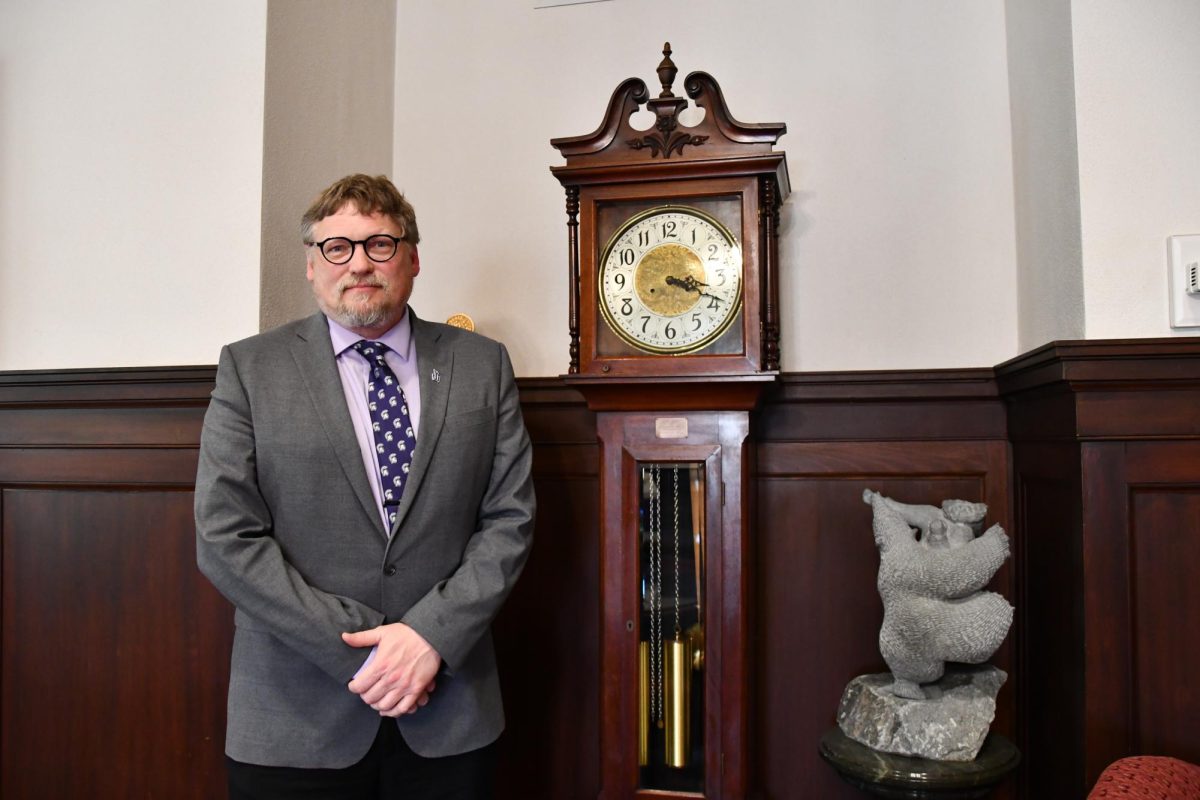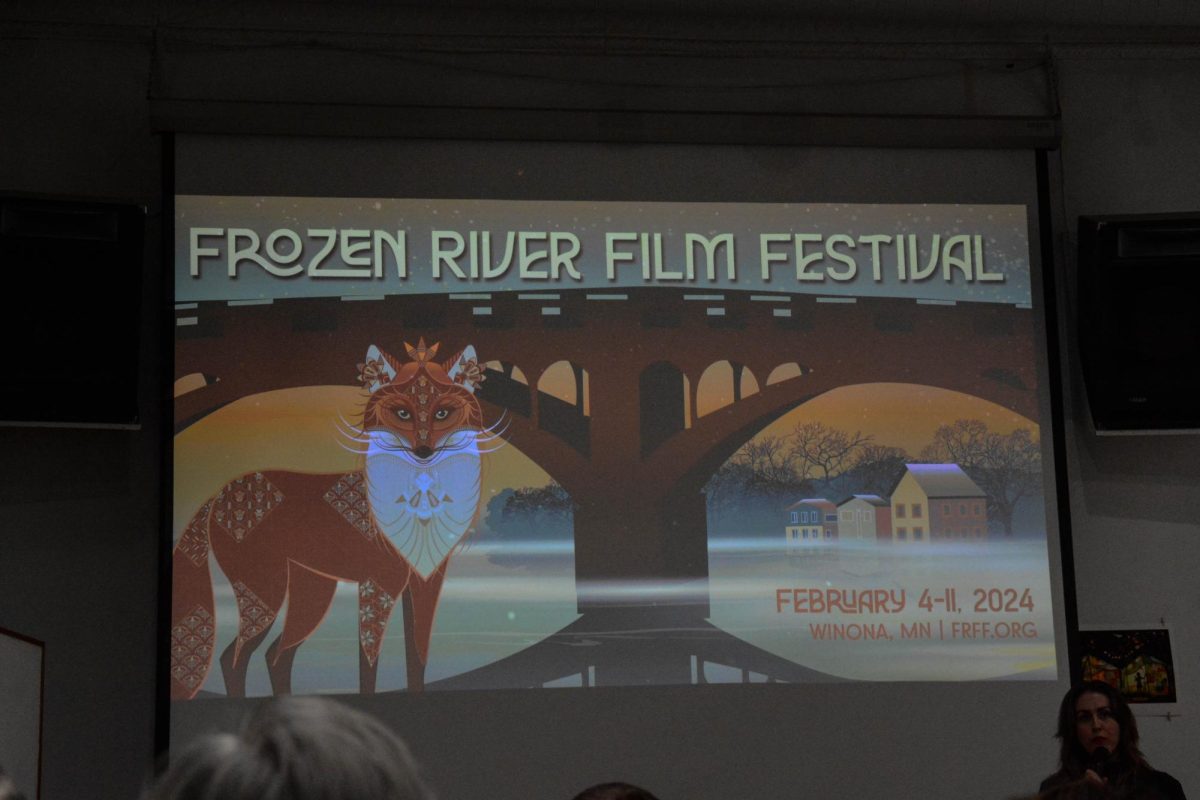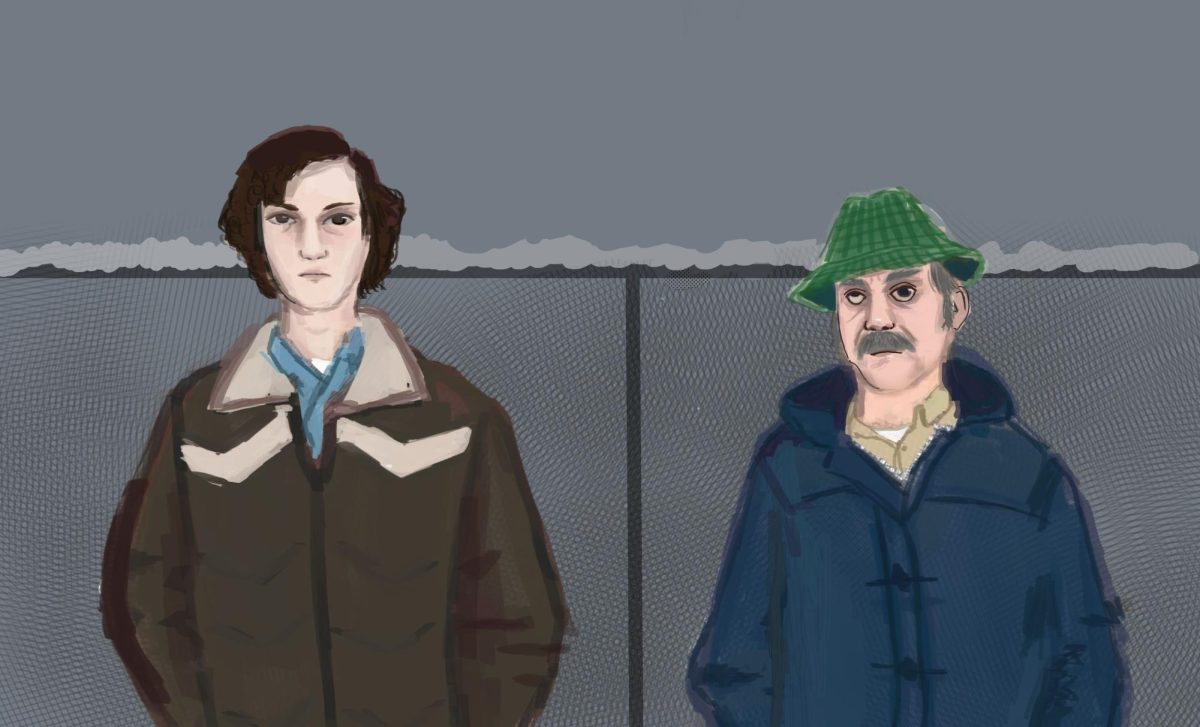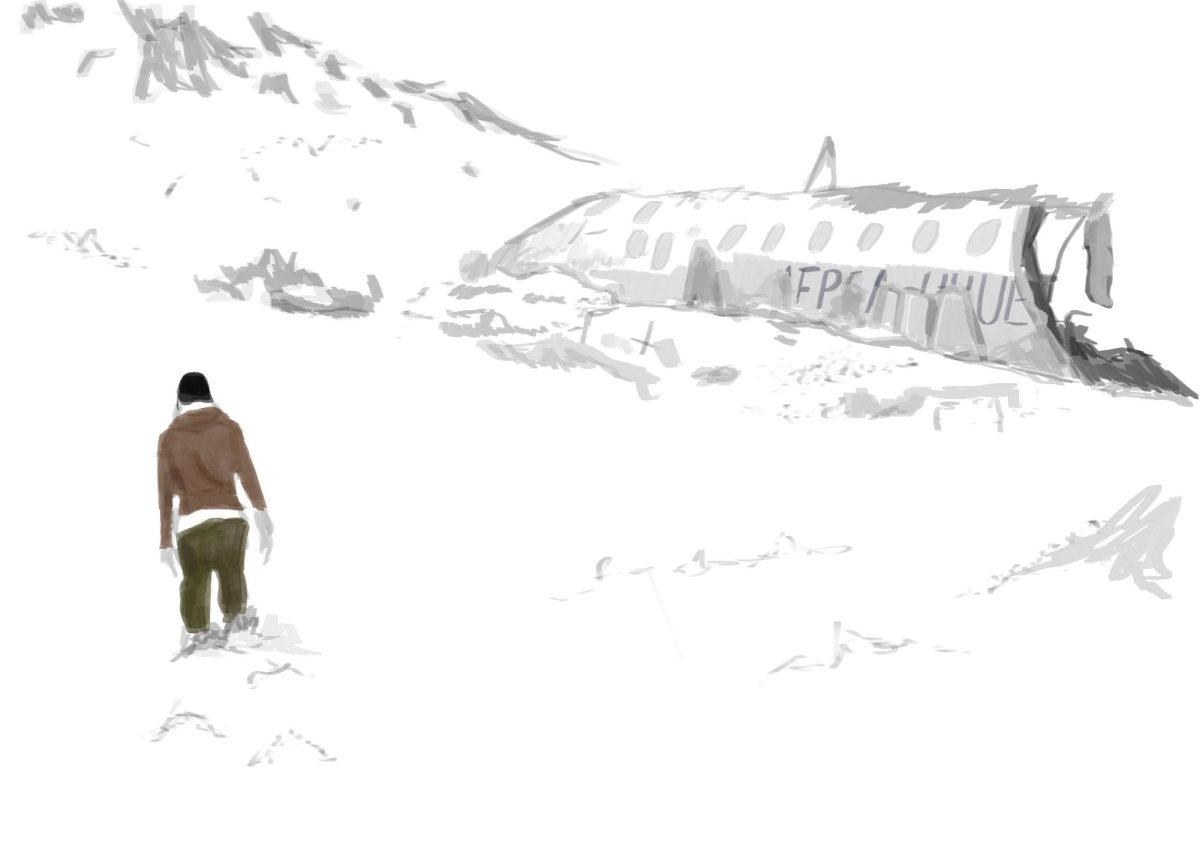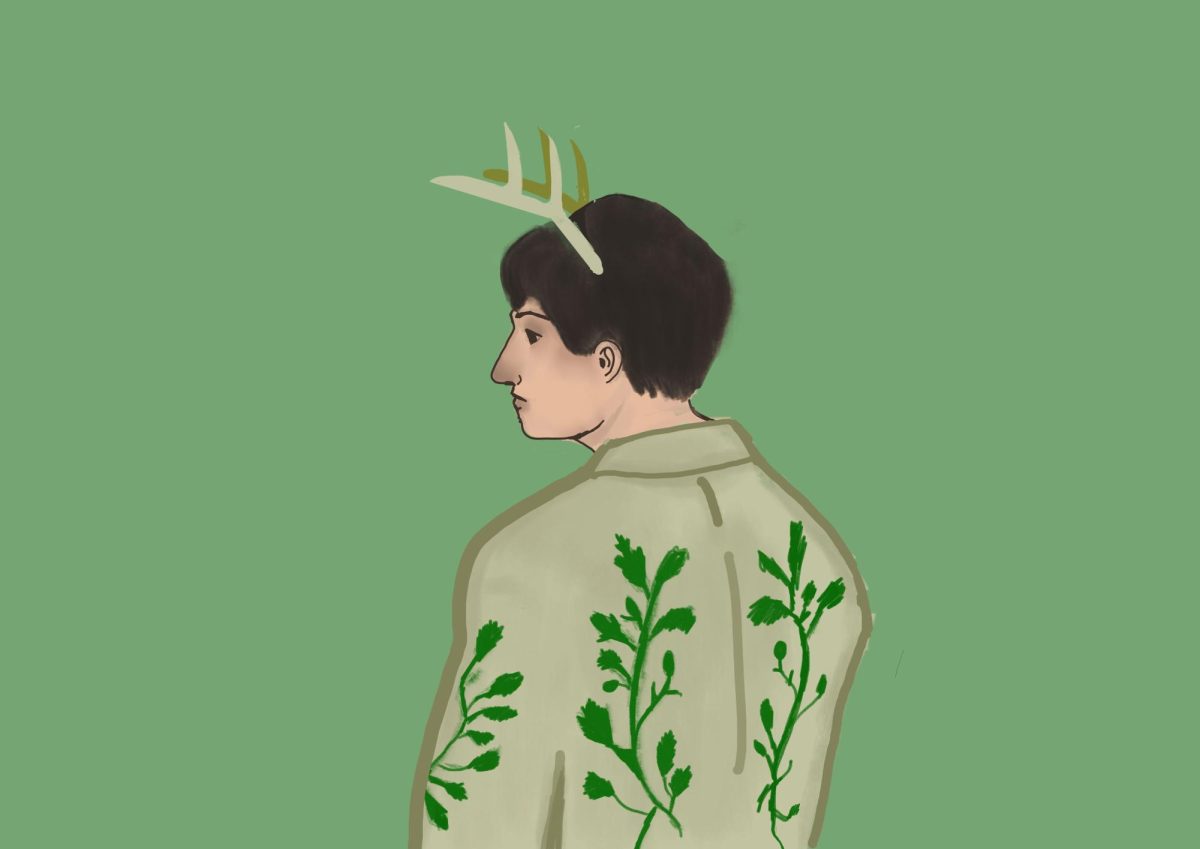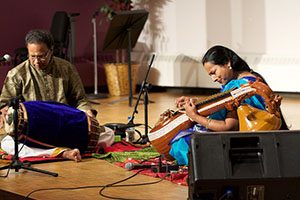
Kilat Fitzgerald / Winonan
World-renowned composer and educator Nirmala Rajasekar performed at Winona State University as part of the music department’s International Music Series.
Rajasekar took the audience on a musical trip she titled “Sublime Journey.” It was a captivating experience, with three different melodies called “ragas” setting the pace and sensation of each section. Every separate raga conveyed its own mood, as well as presenting different stages in the journey.
Rajasekar said the beauty “happens in that journey inbetween the notes,” adding that “every concert is a test.”
The national instrument of India, the veena, was her instrument of choice. With 24 frets embedded in hardened beeswax for tone, Rajasekar made seven strings sound like entering another world.
Rajasekar performed alongside percussionist Muruga Boopathi and his drum, the mridangam. This instrument was a barrel-shaped double-headed percussion device with a goatskin surface and a metal ring in the center. This made for an evening of music that performed to a unique taste of traditional Southern Indian tunes.
The specific genre of music, “Carnatic,” is “a very scientific yet aesthetic form of music which has been passed on for over 2000 years by the oral tradition-from teacher to student,” according to Rajasekar’s website.
The knowledge she has gained was shared with the audience through a crash course of what her music stands for. By explaining the anatomy of their tools, and making the audience aware of how the piece was organized, bridges of understanding were built between everyone’s perception of music.
However, creating new sounds are not all Rajasekar is capable of. “I used to be a computer engineer,” she said with a smile. “Now, I’m proud to be a musician.”
“The series has evolved over the years. These students have no idea how lucky they are,” Program Director for Music Education Catherine Schmidt said. “To have the opportunity to hear this performance for free…They are world renowned artists.”
Rajasekar has been awarded many honors, including the McKnight Performing Artists Fellowship for the years of 2010-11. She is the first Indian musician to receive decoration.
Her passion for the ancient art of her work has brought her to perform at venues across the world. This includes the United Nations and Carnegie Hall in New York City, the Walker Art Center in Minneapolis, Indonesia, India, Zurich, Switzerland and many others.
“You can watch a video, but it’s not the same,” Schmidt said. “This is so much more vibrant.”
The journey continues as Rajasekar spreads carnatic music with the power of her veena and her remarkable talent. With the funds she received from the McKnight Fellowhip, Rajasekar will continue to explore and experiment with her music.
-By Kilat Fitzgerald





